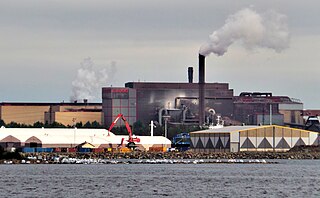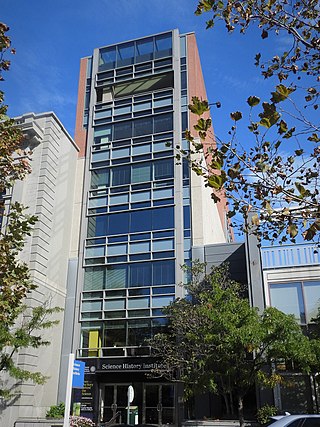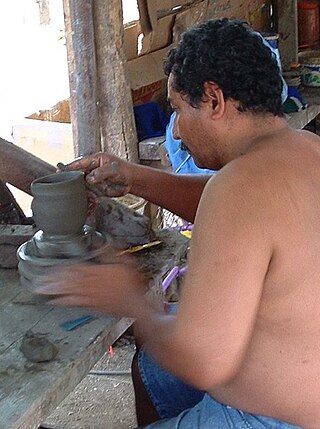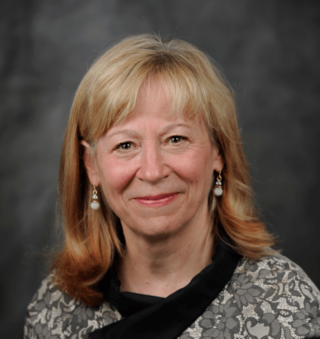External links
Sans Frontières/Without Borders NGOs | |
|---|---|
|
| | This article about a chemistry organization is a stub. You can help Wikipedia by expanding it. |
| | This international development-related article is a stub. You can help Wikipedia by expanding it. |
| Abbreviation | CWB |
|---|---|
| Formation | 2004 |
| Type | INGO |
Region served | Worldwide |
Official language | English |
| Website | CWB Official website |
Chemists Without Borders is a non-governmental organization involved in international development work designed to solve humanitarian problems through chemistry and related activities. As a public benefit, non-profit organization, the primary goals of Chemists Without Borders include:
Chemists Without Borders was founded in 2004 by Bego Gerber and Steve Chambreau as a result of a letter that Gerber sent to the editor of Chemical and Engineering News in September 2004.
Chemistry is the scientific study of the properties and behavior of matter. It is a physical science within the natural sciences that studies the chemical elements that make up matter and compounds made of atoms, molecules and ions: their composition, structure, properties, behavior and the changes they undergo during reactions with other substances. Chemistry also addresses the nature of chemical bonds in chemical compounds.

A chemist is a graduated scientist trained in the study of chemistry, or an officially enrolled student in the field. Chemists study the composition of matter and its properties. Chemists carefully describe the properties they study in terms of quantities, with detail on the level of molecules and their component atoms. Chemists carefully measure substance proportions, chemical reaction rates, and other chemical properties. In Commonwealth English, pharmacists are often called chemists.

Catalysis is the increase in rate of a chemical reaction due to an added substance known as a catalyst. Catalysts are not consumed by the reaction and remain unchanged after it. If the reaction is rapid and the catalyst recycles quickly, very small amounts of catalyst often suffice; mixing, surface area, and temperature are important factors in reaction rate. Catalysts generally react with one or more reactants to form intermediates that subsequently give the final reaction product, in the process of regenerating the catalyst.

Food science is the basic science and applied science of food; its scope starts at overlap with agricultural science and nutritional science and leads through the scientific aspects of food safety and food processing, informing the development of food technology.

The American Chemical Society (ACS) is a scientific society based in the United States that supports scientific inquiry in the field of chemistry. Founded in 1876 at New York University, the ACS currently has more than 155,000 members at all degree levels and in all fields of chemistry, chemical engineering, and related fields. It is one of the world's largest scientific societies by membership. The ACS is a 501(c)(3) non-profit organization and holds a congressional charter under Title 36 of the United States Code. Its headquarters are located in Washington, D.C., and it has a large concentration of staff in Columbus, Ohio.

Environmental chemistry is the scientific study of the chemical and biochemical phenomena that occur in natural places. It should not be confused with green chemistry, which seeks to reduce potential pollution at its source. It can be defined as the study of the sources, reactions, transport, effects, and fates of chemical species in the air, soil, and water environments; and the effect of human activity and biological activity on these. Environmental chemistry is an interdisciplinary science that includes atmospheric, aquatic and soil chemistry, as well as heavily relying on analytical chemistry and being related to environmental and other areas of science.
Green chemistry, similar to sustainable chemistry or circular chemistry, is an area of chemistry and chemical engineering focused on the design of products and processes that minimize or eliminate the use and generation of hazardous substances. While environmental chemistry focuses on the effects of polluting chemicals on nature, green chemistry focuses on the environmental impact of chemistry, including lowering consumption of nonrenewable resources and technological approaches for preventing pollution.

Supramolecular chemistry refers to the branch of chemistry concerning chemical systems composed of a discrete number of molecules. The strength of the forces responsible for spatial organization of the system range from weak intermolecular forces, electrostatic charge, or hydrogen bonding to strong covalent bonding, provided that the electronic coupling strength remains small relative to the energy parameters of the component. While traditional chemistry concentrates on the covalent bond, supramolecular chemistry examines the weaker and reversible non-covalent interactions between molecules. These forces include hydrogen bonding, metal coordination, hydrophobic forces, van der Waals forces, pi–pi interactions and electrostatic effects.

The American Oil Chemists' Society (AOCS) is an international professional organization based in Urbana, Illinois dedicated to providing the support network for those involved with the science and technology related to fats, oils, surfactants, and other related materials.
In 1957, the research organization of the Chemicals Department of E. I. du Pont de Nemours and Company was renamed Central Research Department, beginning the history of the premier scientific organization within DuPont and one of the foremost industrial laboratories devoted to basic science. Located primarily at the DuPont Experimental Station and Chestnut Run, in Wilmington, Delaware, it expanded to include laboratories in Geneva, Switzerland, Seoul, South Korea, Shanghai, China, and India (Hyderabad). In January, 2016 a major layoff marked the end of the organization.

A chemical substance is a unique form of matter with constant chemical composition and characteristic properties. Chemical substances may take the form of a single element or chemical compounds. If two or more chemical substances can be combined without reacting, they may form a chemical mixture. If a mixture is separated to isolate one chemical substance to a desired degree, the resulting substance is said to be chemically pure.

General Electric Research Laboratory was the first industrial research facility in the United States. Established in 1900, the lab was home to the early technological breakthroughs of General Electric and created a research and development environment that set the standard for industrial innovation for years to come. It developed into GE Global Research that now covers an array of technological research, ranging from healthcare to transportation systems, at multiple locations throughout the world. Its campus in Schenectady, New York was designated a National Historic Landmark in 1975.
Translators without Borders (TWB) is a non-profit organization set up to provide translation services for humanitarian non-profits. It was established in 2010 as a sister organization of Traducteurs Sans Frontières, founded in 1993 by Lori Thicke and Ros Smith-Thomas. As of 2022, it had over 100,000 members. TWB's objective is to address language disparities that impede crucial humanitarian efforts. They aim to accomplish this by facilitating collaboration between non-profit humanitarian entities and a volunteer community of translators.
Niklaus Gerber was a Swiss dairy chemist and industrialist. He was born in 1850 in Thun, Switzerland. He attended the University of Bern and University of Zurich, studied chemistry in Paris and Munich and spent 2 years at the Swiss-American Milk Co. in Little Falls, New York.
The Gerber method is a primary and historic chemical test to determine the fat content of substances, most commonly milk and cream. The Gerber method is the primary testing method in Europe and much of the world. The fairly similar Babcock test is used primarily in the United States, although the Gerber method also enjoys significant use in the U.S. as well.

The Science History Institute is an institution that preserves and promotes understanding of the history of science. Located in Philadelphia, Pennsylvania, it includes a library, museum, archive, research center and conference center.
The term Engineers Without Borders is used by a number of non-governmental organizations in various countries to describe their activity based on engineering and oriented to international development work. All of these groups work worldwide to serve the needs of disadvantaged communities and people through engineering projects. Many EWB national groups are developed independently from each other, and so they are not all formally affiliated with each other, and their level of collaboration and organizational development varies. The majority of the EWB/ISF organizations are strongly linked to academia and to students, with many of them being student-led.

The bismuth-phosphate process was used to extract plutonium from irradiated uranium taken from nuclear reactors. It was developed during World War II by Stanley G. Thompson, a chemist working for the Manhattan Project at the University of California, Berkeley. This process was used to produce plutonium at the Hanford Site. Plutonium was used in the atomic bomb that was used in the atomic bombing of Nagasaki in August 1945. The process was superseded in the 1950s by the REDOX and PUREX processes.

Potters for Peace, which has changed its name to Good Foundations International, is a nonprofit organization that has created a network of potters and other relevant parties to improve quality of life and preserve tradition using local skills and materials. PFP primarily works in Central America and has headquarters in Boulder, Colorado. PFP manages projects that help local potters to improve and market their products. PFP is best known for their work in water treatment, which has influenced water treatment systems worldwide. The treatment strategy follows a Point-of-Use (POU) water treatment design that uses ceramic water filters to remove pathogens and other contaminants from the water. This is generally a very effective method to remove bacteria from water, though there are some concerns about the ease of use and maintenance of the filtration units. Unlike other similar organizations, PFP does not manufacture these filters, but instead helps local communities to set up independent filter workshops to produce and sell the filters.

Geraldine Lee Richmond is an American chemist and physical chemist who is serving as the Under Secretary of Energy for Science in the US Department of Energy. Richmond was unanimously confirmed by the United States Senate to her role on November 5, 2021. In this position, she oversees the Office of Science, the Applied Energy offices, and 13 of the 17 Department of Energy national laboratories. Before this appointment, Richmond served as a Professor of Physical Chemistry and held the Presidential Chair in Science at the University of Oregon. Her research has focused on understanding the chemistry and physics of complex surfaces and interfaces, using laser-based experimental and theoretical computational methods. These understandings are most relevant to energy production, atmospheric chemistry and remediation of the environment. Throughout her career she has also worked to increase the number and success of women scientists in the U.S. and in many developing countries through the COACh program that she founded in 1999. She is a member of the National Academy of Sciences and the American Academy of Arts and Sciences. In recognition of her scientific achievements and contributions to women in science, she received the National Medal of Science from President Obama in 2013.